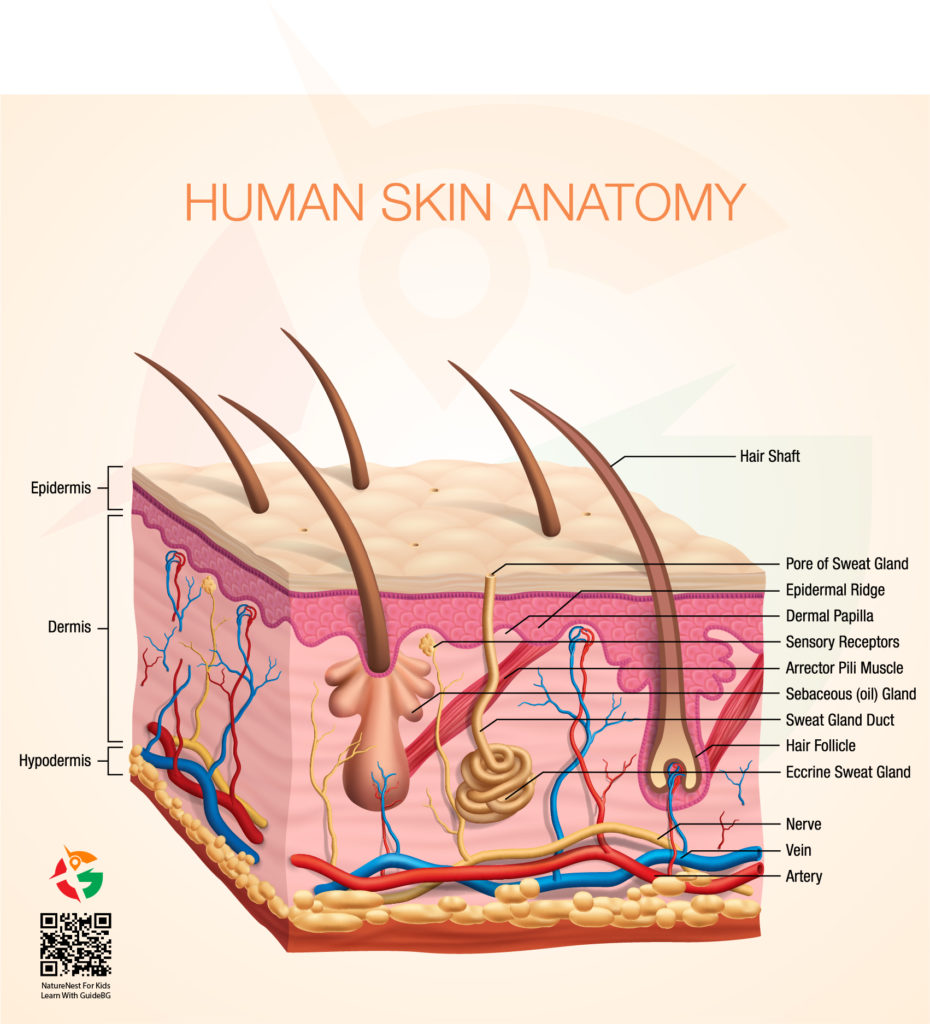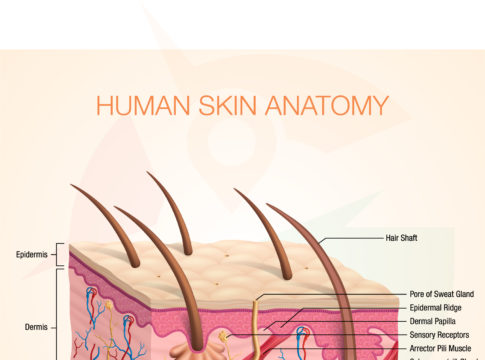Welcome, young adventurers and curious minds! Today, we’re embarking on a fascinating journey beneath the surface of something we all have – our skin! Yes, that stretchy, colorful canvas that covers every inch of us is more impressive than you might think. So, let’s dive deep and uncover the secrets of our skin’s anatomy, where every layer tells a story, and every cell plays a starring role.
The Triple Layered Superhero: Epidermis, Dermis, Hypodermis
Imagine your skin as a superhero’s outfit, with not one, not two, but three super layers, each with its superpowers!
- The Epidermis: This is the top layer, the superhero’s cape, if you will. It’s your body’s first defense against villains like germs and dirt. The epidermis is like a shield, constantly renewing to protect you.
- The Dermis: Dive a little deeper, and you’ll find the dermis. Think of it as the superhero’s gadgets belt, packed with tools and sensors. Here, you’ll find strong fibers that make your skin stretchy and springy, blood vessels that carry nutrients, and sweat glands that help you cool down when your adventures heat up.
- The Hypodermis: The final layer is the hypodermis, the superhero’s power source. It’s made of fat and connective tissue, providing insulation to keep you warm and energy for all your heroic deeds.

The Inner Circle of Skin Allies
- Nerves, Veins, and Arteries are the communication lines and supply routes for your skin. Nerves send messages to the brain (like when you feel a tickle), and veins and arteries deliver food and oxygen while taking away waste.
- Eccrine Sweat Glands: These tiny factories produce sweat, which travels through ducts to open at the skin’s surface, the pores. Sweating is your body’s supercooling system, regulating your temperature and keeping you from overheating.
- Dermal Papilla and Dermal Ridge: These are the skin’s fingerprints, literally! The papillae (tiny bumps) and ridges (the patterns they make) help you grip things and give your skin its unique print. They’re also crucial for feeding the epidermis with blood from the dermis.
- Sensory Receptors: These are your skin’s spies, constantly gathering intel about what’s happening around you. They can detect touch, pain, heat, and cold, sending this information to your brain to help you react to the world.
- Arrector Pili Muscle: Have you ever had goosebumps? That’s the arrector pili muscle at work! This tiny muscle pulls on your hair follicle, causing the hair to stand up and trapping a layer of air for insulation.
- Sebaceous (Oil) Glands: These glands are like your skin’s personal moisturizers, secreting oil to keep your skin soft and waterproof. They work hand-in-hand with your hair follicles to ensure your skin is always in top condition.
- Hair Follicle: This is where each hair on your skin begins its journey. The follicle is a small tube in the skin where the hair grows, getting nourishment from the blood in the dermis.
A Team That Works Wonders
Each element of your skin, from the deepest layer to the smallest gland, works together in perfect harmony. This teamwork makes your skin an incredible organ capable of protecting you, sensing the world, and even repairing itself. It’s a living, breathing, feeling part of you that’s just as adventurous and explorative as you are.
So next time you’re out there, feeling the sun on your face or the wind in your hair, remember the incredible science adventure happening right under your skin. It’s a world of wonder that’s all your own, protecting and supporting you through every adventure life throws your way.
And that, dear explorers, is the marvelous story of our skin. Keep curious, keep exploring, and remember – your skin is the superhero outfit you never take off. Adventure on!



